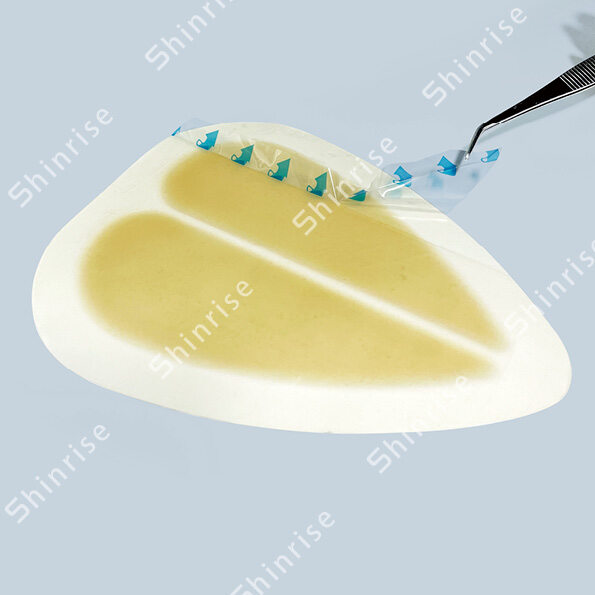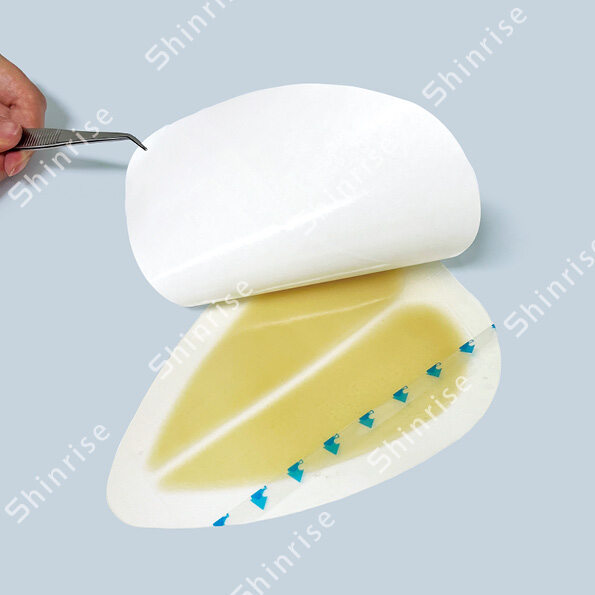Email cannot be empty
Password cannot be empty
Email format error
Email cannot be empty
Email already exists
6-20 characters(letters plus numbers only)
The password is inconsistent
Email format error
Email cannot be empty
Email does not exist
6-20 characters(letters plus numbers only)
The password is inconsistent


The Complete Guide to Hydrocolloid Wound Dressing Pads
When it comes to wound care, one of the most effective and versatile options available today is the hydrocolloid wound dressing pad. Known for its ability to promote healing and protect wounds from external elements, hydrocolloid dressings are a popular choice for healthcare professionals and individuals alike. In this comprehensive guide, we'll explore everything you need to know about hydrocolloid wound dressing pads, from their uses and benefits to how they compare with other types of dressings.
What Are Hydrocolloid Wound Dressing Pads?
Hydrocolloid wound dressing pads are a type of advanced wound care product made from a combination of gel-forming agents such as carboxymethylcellulose and other hydrophilic substances. These materials create a moist environment that encourages wound healing, making them ideal for wounds that need moisture to heal properly.
The dressing adheres to the skin, providing a protective barrier while allowing the wound to heal naturally. Unlike traditional dressings, hydrocolloid pads do not require frequent changing, which reduces the risk of disturbing the wound and prolonging the healing process.
Key Features of Hydrocolloid Wound Dressing Pads
Before diving into the benefits, it's important to understand the key features that make the dressing pads stand out in the world of wound care.
1. Moisture Retention
One of the most significant features is their ability to retain moisture. This is essential for wounds that heal best in a moist environment, such as pressure ulcers, burns, and surgical wounds.
2. Self-Adhesive
These dressings are self-adhesive, meaning they stick to the skin without the need for additional adhesives or bandages. This reduces the need for frequent adjustments and minimizes the risk of the dressing falling off.
3. Waterproof and Bacteria-Resistant
Hydrocolloid pads are waterproof, which allows individuals to bathe or shower without worrying about the dressing coming off. Additionally, they form a barrier that protects the wound from bacteria, dirt, and other contaminants, reducing the risk of infection.
4. Elect Hydro Hydrocolloid Thin Dressing
For areas that require more flexibility or have delicate skin, the thin dressing is a great option. This variation of hydrocolloid dressings is thinner and more flexible, allowing it to conform to areas like joints or parts of the body that experience frequent movement.
The Benefits of Using Hydrocolloid Wound Dressing Pads
1. Promotes Faster Healing
The dressing pads help to create an optimal environment for wound healing. By maintaining a moist wound bed, they accelerate the healing process and encourage the formation of new tissue. This is particularly beneficial for wounds that are slow to heal or prone to infection.
2. Pain Reduction
Because hydrocolloid dressings don’t need to be changed as often as other dressings, they cause less disruption to the healing wound. This results in less pain during dressing changes and a more comfortable healing experience overall.
3. Less Scarring
The moist environment created by hydrocolloid pads reduces the likelihood of scarring. The moisture encourages new skin to form more smoothly, preventing the formation of scabs that could lead to scars.
4. Long-Lasting Wear
Hydrocolloid wound dressings are designed to stay in place for several days, sometimes up to a week, depending on the wound's condition. This long wear time reduces the need for frequent dressing changes, making them ideal for individuals who prefer low-maintenance wound care.
When to Use Hydrocolloid Wound Dressing Pads
Hydrocolloid dressings are versatile and can be used for various types of wounds. Some of the most common uses include:
1. Pressure Ulcers
Pressure ulcers, also known as bedsores, are wounds that form on the skin due to prolonged pressure. The dressing pads are an excellent choice for treating pressure ulcers because they maintain a moist environment that promotes faster healing.
2. Burns
For first and second-degree burns, hydrocolloid dressings can provide protection while promoting healing. They help reduce pain and minimize scarring, making them a preferred choice for burn treatment.
3. Surgical Wounds
After surgery, it’s important to keep the wound clean and protected. Hydrocolloid pads provide a sterile barrier that shields the wound from bacteria and helps it heal more quickly.
4. Minor Cuts and Abrasions
The dressing pads aren’t just for severe wounds; they can also be used for minor cuts, scrapes, and abrasions. Their moisture-retaining properties help speed up the healing process and minimize discomfort.
How to Apply a Hydrocolloid Wound Dressing Pad
Applying the dressing pad correctly is crucial to ensuring optimal wound healing. Follow these steps for the best results:
1. Clean the Wound
Before applying the dressing, gently clean the wound with a saline solution or mild cleanser. Make sure the skin around the wound is clean and dry.
2. Choose the Right Size
Select a dressing that is large enough to cover the wound with an additional margin of about 2-3 centimeters around it. This ensures the pad adheres properly and provides adequate protection.
3. Apply the Dressing
Carefully remove the backing from the dressing and apply it directly over the wound. Smooth it out to remove any air bubbles and ensure good adhesion.
4. Monitor the Wound
Check the dressing daily to ensure it is still securely in place and that there is no leakage. However, unless it becomes saturated or begins to peel off, there is no need to change the dressing frequently.
5. Remove Gently
When it’s time to change the dressing, peel it off slowly and carefully to avoid damaging the healing tissue. Clean the wound again before applying a new dressing.
Comparing Hydrocolloid Dressings with Other Types of Dressings
With so many wound care options available, it can be challenging to determine which dressing is best for your needs. Here's how the dressing pads compare to other common types of wound dressings.
1. Hydrogel Dressings
Hydrogel dressings, like hydrocolloid pads, also promote moist wound healing. However, they are more suitable for wounds that are dry or have dead tissue. Hydrocolloid dressings, on the other hand, are better for wounds that need to be kept moist, such as ulcers or burns.
2. Foam Dressings
Foam dressings are highly absorbent and best suited for wounds that exude large amounts of fluid. While hydrocolloid pads can absorb some fluid, they are better for wounds with light to moderate exudate. Foam dressings may be a better choice if your wound produces a significant amount of drainage.
3. Transparent Film Dressings
Transparent film dressings are often used to cover wounds with minimal drainage, such as IV sites or minor cuts. They don’t provide the same level of moisture retention as hydrocolloid dressings, making them less effective for wounds that need a moist healing environment.
How to Choose the Right Hydrocolloid Wound Dressing Pad
When selecting a hydrocolloid dressing, it's essential to consider the specific needs of your wound and your overall preferences.
1. Wound Size
Hydrocolloid pads come in various sizes, so be sure to choose one that fits your wound correctly. For larger wounds, you may need a larger dressing or multiple smaller pads to cover the area.
2. Thin vs. Standard
As mentioned earlier, elect hydro hydrocolloid thin dressings are great for areas that require more flexibility. Thicker hydrocolloid dressings are best for wounds that need extra padding or protection.
3. Wear Time
Depending on your lifestyle, you may prefer a dressing that can stay in place for several days. Hydrocolloid wound dressing pads generally last longer than other dressings, so they are ideal for individuals looking for low-maintenance wound care.
Conclusion
Hydrocolloid wound dressing pads have revolutionized wound care by providing a versatile and effective solution for a wide range of wounds. From pressure ulcers to minor cuts, these dressings offer a moist environment that promotes faster healing, reduces pain, and minimizes scarring. Their waterproof, bacteria-resistant properties make them a reliable choice for anyone seeking long-lasting protection.
Whether you're looking for a thick pad for additional protection or the more flexible elect hydro hydrocolloid thin dressing, hydrocolloid wound dressings can meet your needs. With proper care and application, these dressings will help you achieve optimal wound healing and comfort.
Investing in the right wound care product can make all the difference in your recovery process, and hydrocolloid wound dressing pads are an excellent choice for achieving quick and efficient healing.

